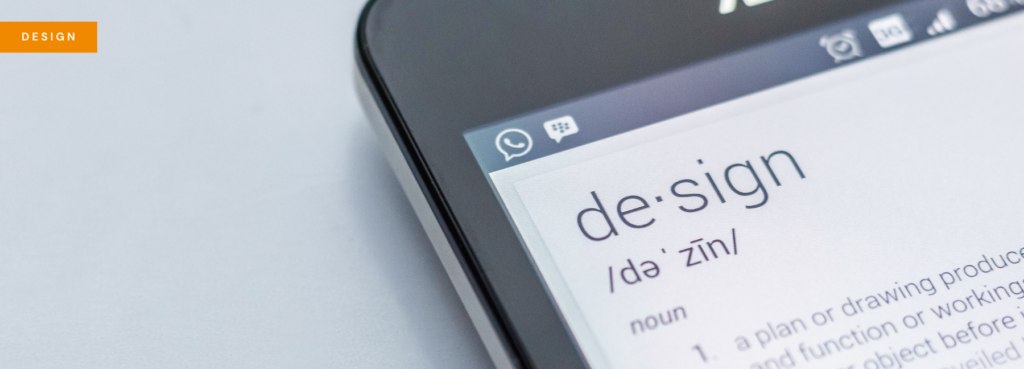Right brain vs. left brain: a designer’s daily dexterity

Right brain vs. left brain – which one are you? In this article, the BookMachine Editorial Board member for Design, Linda Secondari, gives insights into how the two sides of a designer’s brain work together in the creative process.
According to the Centre for Educational Neuroscience, “the left brain is the analytical, logical, verbal half while the right brain is the creative, emotional, visuospatial half; individuals who have one side more active than the other are believed to show corresponding cognitive styles and personalities.”
In the design studio I founded, Studiolo Secondari, we believe all this left-brain-right-brain thinking misses the boat, especially where design is concerned. The truth is that designers harness both sides of the brain to solve problems creatively.
Design is the practice of utilising artistic techniques to solve problems. As a discipline, design requires equal parts creative inspiration and analytical process. Designers come in all flavours and run the spectrum from those primarily guided by intuition and imagination to those who focus on process and methodology. To understand this better, I’ll give you an insight into how I use left- and right-brain aptitude during the design process.
I use the left side of my brain at the very beginning when I dive into the discovery process. The discovery process involves analysing the problem, exploring the specifications and constraints like budget, size, manufacturing techniques and market expectations, as well as defining the project’s goal. By doing the left-side work first, investigating requirements, competition research, scoping the problem and opportunities, I begin to develop an approach or instinct which will evolve into a solution. When I begin to feel that tingle of potential in the right side of my brain, I know the design process is transitioning from the left side of the brain to the right side.
I use the right side of my brain to consider the problem from a different perspective by combining my creative impulse (that feeling of knowing that this is the right direction, the correct palette, the perfect font) and my ability to mash up unrelated ideas until a creative solution emerges.
Then I switch back to the left side of my brain to analyse the design developed thus far by comparing it to the goals of the project and the contextual analysis I did at the beginning.
To succeed in designing a solution, designers must combine their artistic impulse with their technical skill and business acumen.
For designers whose practice is based in methodology, leaning into the right side of the brain can be unsettling. The need to close your eyes, let go of the steering wheel, and fly the plane with “the Force” (“Use the Force, Luke!”) is unnerving. Often, ideas that come to us might conflict with what our left brain is thinking, and that tension can sow doubt, but taking the leap of faith (another right-brain strength) and going with your gut will often result in success!
I recently had to grapple with that left-brain-right-brain tension while redesigning the Studiolo Secondari website. My instinct was to use a display font called Coquette. It is a script-typeface and seems created for an Italian gelateria. The left side of my brain said it was too pretty and frivolous for Studiolo clients. Ultimately my artistic instinct won out, and I believe the font is the perfect way to position Studiolo Secondari with my creative personality at its centre.


I also dealt with the left-brain-right-brain split when developing a publication system for the Organisation for Economic Co-operation and Development (OECD). My artistic impulse (right brain) was to use an energetic colour scheme, although the content was traditional, and data driven. The inspiration was the fashion designer Elsa Schiaparelli and her audaciously vivid pink. Studiolo used the Schiaparelli pink as the core of the palette and chose five more colours to compliment it and address the text requirements. The layout made the most of the arresting palette by using full-bleed spans of colour, with text knocking out. One more challenge (a left-brainer) was that the palette had to be compliant with WCAG colour requirements for accessibility. Proposing such a vibrant palette to our client was a risk, but the right-brain instinct knew it was the right choice. And guess what? The client loved it! They appreciated how the colour palette helped brighten the content and appealed to their stylish, Parisian spirit (the OECD office’s location is in the 16th arrondissement of Paris).

Design is a discipline in which designers use the right and left sides of their brains every day to achieve creative and practical success – it is one of their many superpowers.
According to this article from the Dana Foundation, “There is indeed evidence that a particular region of the right hemisphere is activated in certain kinds of creative breakthrough… But the problem-solving process leading up to the insight, it appears, depends on a more broadly distributed cortical network… It may be that rather than reflecting the dominance of one hemisphere over the other, creativity in essence represents a glowing demonstration of [the left and right brain’s] ability to work together.”
What are your thoughts on the right- vs. left-brain thinking view? How do you use each side of your brain as a designer? Share your comments below.
Linda Secondari is the Principal and Creative Director of Studiolo Secondari, a design firm located in NYC specializing in book design, branding, and design strategy. Before establishing Studiolo, Linda was Creative Director at Oxford University Press where she oversaw the design for yearly title output of 3,000+ books. Linda’s work has been recognized by the AIGA, NY Book Show, Stiftung Buchkunst Competition of the Frankfurt Book Fair, and the AUP Book, Jacket, and Journal Show. @StudioloLinda





